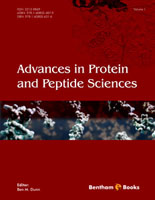
Photo from archive.org
Enzymes and structural proteins dominated thinking about protein structure and function for most of the twentieth century. In recent decades, however, we have begun to appreciate the significant physiological and… Click to show full abstract
Enzymes and structural proteins dominated thinking about protein structure and function for most of the twentieth century. In recent decades, however, we have begun to appreciate the significant physiological and pathological roles of nonglobular proteins. Amyloids first gained infamy from their implications in a score of human mortal diseases. However, they have recently been discovered to play vital physiological roles, such as memory consolidation in humans. This raises an important question: Can we inhibit pathological amyloids without affecting functional amyloids? Intrinsically disordered proteins (IDPs), many of which are prone to form amyloids, perform many essential functions, yet their importance has only been recognized in the last quarter century. A subclass of IDPs can form, under certain conditions, water immiscible liquid phases which serve to process, regulate, store or transport RNA. Perturbation of these remarkable liquid phases can lead to aggregates, such as those formed by the proteins TDP-43 and FUS, which are linked to ALS and other dementia. Here, we summarize our changing view of intrinsically disordered, liquid phase forming and amyloidogenic proteins and the uncertainties that will drive future research.
Journal Title: Protein and peptide letters
Year Published: 2017
Link to full text (if available)
Share on Social Media: Sign Up to like & get
recommendations!